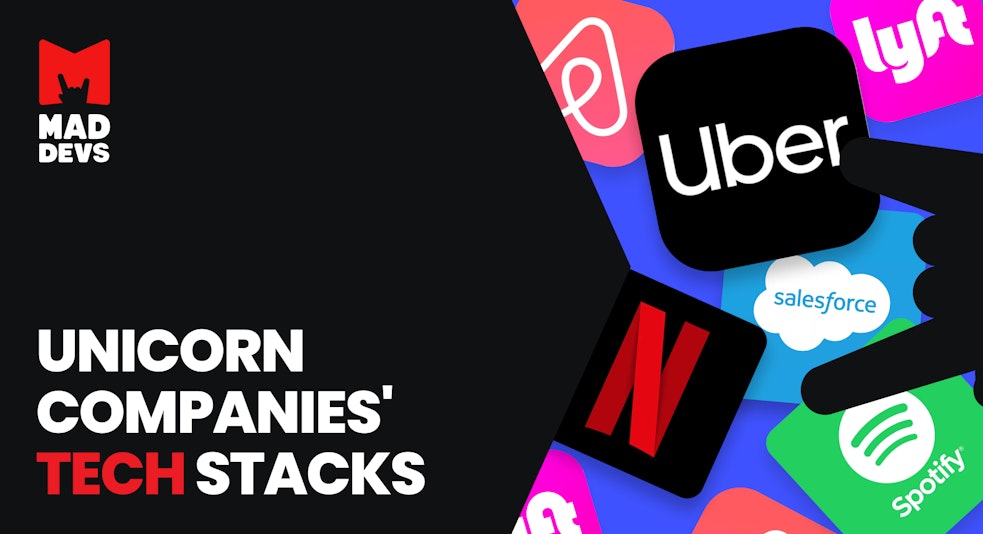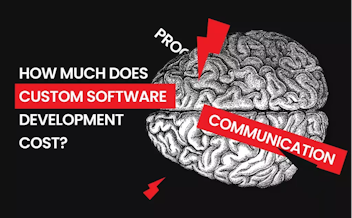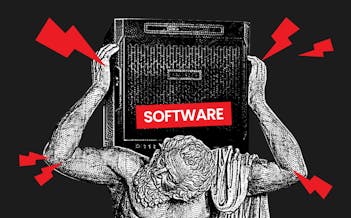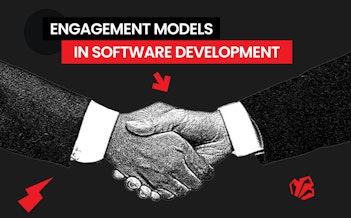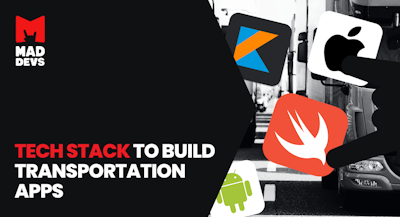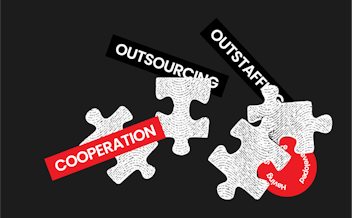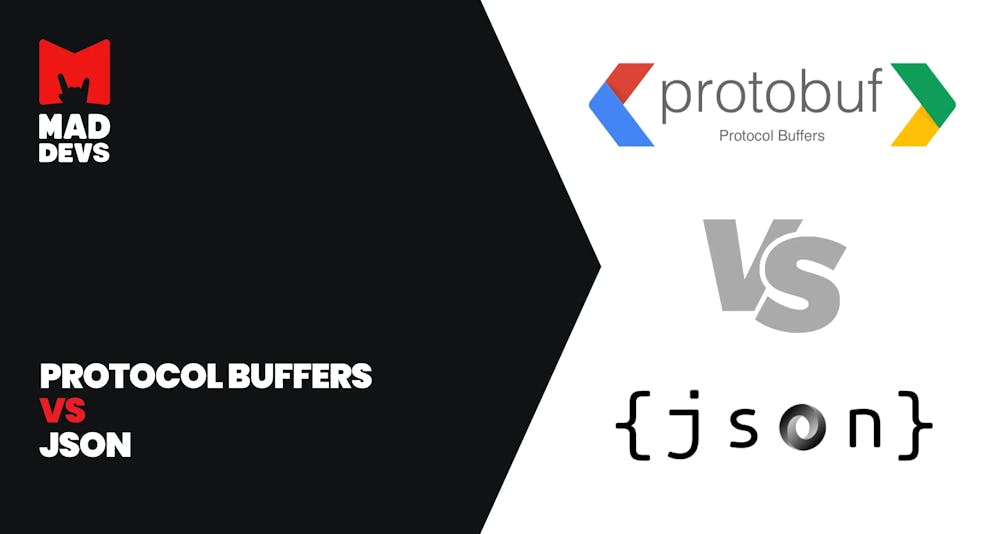Netflix vs. Hulu, Hubspot vs. Salesforce, Spotify vs. Pandora, Databrick vs. ByteDance, Canva vs. Miro, and Uber vs Lyft are the rivalries that interest most entrepreneurs and startup owners looking to create their solutions in the niche.
Why? Because knowledge is power. Once you know what’s under the hood of the most prominent tech giants of the 21st century, planning a tech stack for your own business is much easier. Learning about prominent companies’ choices shows what languages, tools, and frameworks have already proved to be effective in the field.
First, let’s explore what a tech stack is before diving deep into what’s happening behind the curtains of the applications that millions of people use every day.
What is a tech stack?
A tech stack is the selection of technologies used to power every aspect of a product from the backend. It includes hosting and cloud storage. Put simply, a tech stack is essential for all the instruments and materials your development team will use to build an app from the ground up.
Why do tech stacks matter?
Choosing a tech stack is a strategic decision. It has a lasting impact on the entire development lifecycle and even beyond. The same tasks can be solved by various technologies, and you need to find the ones that fit your individual needs, i.e. the ones that are effective and cost-efficient.
If you are unsure what to choose, you can tell us about your project at a free consultation. Our Delivery Managers will carefully consider your case and offer the most suitable and profitable solution for the launch and growth of your business.
Why do tech stacks of other companies matter?
Not every coding language, cloud storage, framework, or virtual machine is made equal. More on the matter, most are designed to address a very specific set of challenges.
Let’s take a look at Python, for example. It is an interpreted, high-level language that, according to its common description, is used for general-purpose programming. It’s true to an extent: you can, in theory, code anything you want with it. You can use Python to develop a Data Science app, a Web scraping tool, AI, or IoT products. It would be much harder to develop a web page’s front-end or a mobile app using Python.
If you try to use Python to develop things it’s not designed for, you will be spending more time, doing excessive reworks, and investing heavily in third-party tools. The entire development process will become problematic for the team and the investors.
Opening a wine bottle with a fork is possible, but why bother when there’s a perfectly good corkscrew around?
This is exactly why many businesses spy on the market’s most successful products to see what fitting solutions those have found.
Without further ado, let’s take a look at the tech stacks of the most prominent Tech companies.
Video streaming servises
The online streaming services market is fragmented. So vendors to attract more users are deploying growth strategies such as offering advanced products or expanding their businesses to new regions to compete in the market.
During the COVID-19 pandemic, platforms have registered a spike in their viewership worldwide. Because the pandemic has restricted people from staying indoors for a prolonged period. As a result of this situation, streaming services' viewership and engagement increased, resulting in service video demand.
The global video streaming market is expected to reach USD 330.51 billion by 2030, with a compound annual growth rate of 21.3% from 2022 to 2030. The market is expected to grow due to technological advancements such as blockchain technology and AI to improve the quality of videos.

What is Netflix tech stack
Some might argue that Netflix owes its success to the vast availability of stunning content, but that is only partially true. After all, what’s the point of having critically acclaimed shows in a place where no one can see them?
The Netflix app is based on multiple programming languages: Python, Node.JS, Java, Kotlin, and Swift. This is done to ensure all-round compatibility of the Netflix app across multiple platforms: browsers, smart TVs, smartphones, and gaming consoles.
The comprehensive library part of the stack is designed to offer users the most polished experience they’ve grown to expect from a streaming service. Netflix owes its user-friendly interface to React and JS UI libraries.
Given the app’s heavy emphasis on cloud-based solutions, the team behind the streaming giant has opted to use Dynomite as the database cluster management service. It offers several exceptional advantages: for example, support for in-memory, pluggable, and persistent storage engines.
You can also get our free consultation if you need more expertise in developing and supporting streaming services like Netflix. We are always ready to provide our best software and mobile app development practices.
Application and Data Used to Netflix
Python
Node JS
DevOps technologies used to Netflix
Jenkins
GitHub
Business Tools and Utilities Used to Netflix
Confuence
OneLogin
What is Hulu tech stack
In 2007, Hulu made its debut on the web using a monolithic application written in Rails and jQuery. This architecture benefited Hulu at the startup stage by simplifying development and deployment efforts, but as the company, product, and engineering teams grew, new architectural challenges emerged.
Hulu Web applications are now built using Node.js. They chose to React as a UI library. The state management challenge is solved by React's own component state. In order to push the limits of web performance, server-side rendering is preferred. Next.js was chosen as the underlying framework.
To test React, they chose Jest and react-testing-library. Since the first commit, they have required 100% coverage of unit tests.
Application, data, and DevOps technologies used to Hulu
Python
NGINX
Business tools and utilities used to Hulu
CRM platforms
A customer relationship management system (CRM) is tool companies use to manage relationships and interactions with their customers and potential customers. The main goal of this platform is: Improve business relationships.
The global customer relationship management market size was valued at USD 52.4 billion in 2021. From 2022 to 2030, the global customer relationship management market is expected to grow at a CAGR of 13.3%.

Growing demand for CRM solutions worldwide is driven by the need to automate customer engagement, improve digital operations, and enhance customer experience and services. The market is expected to be driven by emerging technologies, including cloud computing, AI, machine learning, and various service models, including SaaS, Infrastructure as a Service (IaaS), and Platform as a Service (PaaS).
HubSpot tech stack
HubSpot is a cloud-based CRM platform. The HubSpot CMS was launched in April 2020. This platform is designed to connect everything scaling companies need to deliver a best-in-class customer experience into one place.
In addition to being easy to use, HubSpot is also incredibly easy to create with. For example, landing pages, forms, and emails can be created using drag-and-drop. Additionally, you can bulk-create and schedule social media content. Businesses that don't have the time to create these kinds of content will greatly benefit from this.
HubSpot has grown revenues by 40%, compounded annually since 2014. Additionally, the business has a high retention rate and has gradually improved its profitability and free cash flow. From its all-time highs in November 2021, the stock price has been butchered by 67%. In this post, let's take a closer look at the company's business model, financials, and valuation. As of October 2022, HubSpot has a market cap of $14.24 Billion.
Application and data technologies used to HubSpot
DevOps technologies used to HubSpot
Kubernetes
IntelliJ IDEA
Business tools and utilities used to HubSpot
Salesforce Tech Stack?
A lot about the tech stack behind Salesforce itself is not public knowledge, but one can figure out a lot from the assortment of tools the company is known to use.
As with all large-scale projects that support thousands of users in real time, the primary focus is scalability. Then comes usability on a multitude of platforms, including web browsers and native mobile applications. And, of course, data storage and security are pivotal, given the number of contacts and deals users store in their Salesforce accounts.
Also, Salesforce features custom-built analytics tools and complex search and analysis algorithms.
Application, Data, and DevOps Technologies Used to Salesforce
Jenkins
Cloudant
Business tools and utilities used to Salesforce
Music streaming services
According to the Music Streaming Market Size, Share & Trends Analysis Report, 2022-2030, the global music streaming market size was valued at USD 29.45 billion in 2021. Between 2022 and 2030, it is expected to grow at a CAGR of 14.7%. The growing use of digital platforms and smart devices is expected to boost the market growth. Music streaming services allow users to listen to audio and podcasts and watch music videos. Due to their features, these platforms are gaining popularity.

Due to the popularity of music streaming platforms and the increasing disposable income of individuals, the market has grown rapidly. Also, streaming services are rapidly gaining popularity due to the availability of free trials and subscription options and the decline in CD sales.
Additionally, cloud-based music is gaining popularity in the market. Companies are working on developing apps that make streaming music easy on tablets and smartphones. By integrating a cloud component into music streaming platforms, companies can enhance their services by saving storage space and offering easy streaming from multiple devices. Factors such as the digitally literate population and smart devices fuel future market growth.
Spotify tech stack
In essence, all music streaming applications work similarly. Millions of tracks are stored either on physical servers or in clouds (Spotify chose the latter) and are then streamed to a user’s device.
But there’s much more to Spotify. Pivotal to the music streaming giant’s success is its functionality of music discovery based on complex algorithms of preference and behavior analysis.
Spotify’s tech stack focuses on three primary challenges:
- Uninterrupted streaming: Multiple servers in different locations
- Data storage: Own cloud-based architecture, Hub framework, Google Cloud, Docker, Apache Storm
- AI-based recommendations: Python
Application and data technologies used to Spotify
Python
NGINX
DevOps Technologies Used to Spotify
New Relic
Percy
Business tools and utilities used to Spotify
AdRoll
Salesforce Desk
Pandora tech stack
Pandora is one of the oldest and most recognizable names in the streaming music category. It offers a relatively basic feature set and a few intriguing extras to help it compete with the big streaming music players.
Founded in 2000 as Savage Beast Technologies, the company initially targeted B2B customers. In 2005, the company shifted its focus to the consumer market.
In February 2019, Sirius XM Holdings acquired Pandora for $3.5 billion in stock. In 2021, Pandora had about 55.9 million active monthly users and 6.4 million subscribers.
In 2021, Pandora Music generated $2 billion in revenue, a 22% increase over the previous year. Pandora's market cap was $4.66 billion in October 2022.
Music streaming service Pandora is 2nd most popular, with 43 sessions per user per month. This is only second to Spotify, with 61 monthly sessions per user. Spotify has almost 30% more sessions per user.
Application and data technologies used to Pandora
jQuery
HTML5
DevOps Technologies Used to Pandora
Jenkins
Bitbucket
Business tools and utilities used to Pandora
AI sphere projects
According to the Fortune Business Insights report, titled Artificial Intelligence Market Forecast, 2022-2029, is expected growing investment in AI technology by enterprises of all sizes across industries. Retail, BFSI, healthcare, food and beverage, automotive, and logistics are among the industries driving the demand for AI technology.
The Artificial Intelligence market size was valued at USD 328.34 billion in 2021. During the forecast period, the global AI market is expected to grow from USD 387.45 billion in 2022 to USD 1394.30 billion in 2029 at a CAGR of 20.1%.
It is becoming increasingly difficult to ignore the number of successful AI companies worth more than $1 billion, mainly since many of them were only founded within the last 5 years. Today exist, more than 117 AI unicorn companies.
Databricks tech stack
Databricks is a data lakehouse architecture and AI company. It provides a unified, open platform for all data. As well it is the first lakehouse platform in the cloud.
Currently, the value of this organization is $38 billion. In 2019, it became a tech unicorn thanks to investments from Andreessen Horowitz, BlackRock, CapitalG, Fidelity Investments, Microsoft, and Salesforce Ventures.
More than 5,000 of organizations worldwide — including Comcast, Condé Nast, Nationwide, H&M, and over 40% of the Fortune 500—rely on Databricks’ unified data platform for data engineering, machine learning, and analytics. The Databricks platform provides data scientists, engineers, and analysts with a simple collaborative environment for running interactive and scheduled data analysis tasks.
Application and data technologies used to Databricks
DevOps technologies used to Databricks
Business tools and utilities used to databricks
Tableau
Salesforce
ByteDance (TikTok) tech stack
ByteDance was founded in March 2012 by Zhang Yiming, it became a tech unicorn in 2017. And it is best known for its mobile apps with entertainment value. Currently, ByteDance owns Douyin, Toutiao, TikTok, Xigua Video, Helo, Lark, and BytePlus.
As of June 2021, ByteDance hosts 1.9 billion monthly active users across all its content platforms. A report by Reuters estimates the company's value at $78 billion and more than $7 billion in revenue for the first half of 2021.
In the framework of our article, we will consider Douyin, known as TikTok outside China. In 2018 ByteDance merged Musical.ly and TikTok and launched a new product in the U.S. Since then, the short-form video app has gained massive popularity.
How does TikTok use AI? For example, the app includes an in-app text-to-image AI generator that lets users type a prompt and receive an image that can be used as a video background. Users can access the "AI greenscreen" effect through the short-form video app's camera screen.
TikTok's AI-driven algorithmic personalization took the "For You Page" (FYP) to an entirely new level. By connecting content creators and audiences based on commonalities, TikTok developed a symbiotic ecosystem. Using a two-pronged approach, it curated a personalized FYP to retain app user interest and boost influencer reach to reward them for creating valuable content.
The use of these techniques kept creators and viewers engaged and hooked on the app.
Application, data, and DevOps technologies used to TikTok
Fintech projects
The Global Fintech (financial technology) Market is valued at USD 112.5 Billion in 2021 and is projected to reach a value of USD 332.5 Billion by 2028. The Global Market is expected to grow to exhibit a CAGR of 19.8% over the forecast period.
Fintech uses new technical breakthroughs in financial products and services to enhance and automate the supply and usage of financial services. It also intends to compete with existing traditional financial methods in delivering financial services by incorporating various technologies such as application programming interfaces (APIs), artificial intelligence (AI), blockchain, and data analytics.
Revolut tech stack
Revolut is a UK-based financial technology company offering a range of financial services. The company was founded in 2015.
The current valuation of this company is $33 billion due to investments from companies like Index Ventures, DST Global, and Ribbit Capital. With more than 1500 employees, it became a unicorn in 2018.
It became the UK's most valuable tech startup in 2021. Among the financial services offered by Revolut are current accounts, insurance, stock trading, debit cards, currency exchange, and foreign exchange.
Application and data technologies used to Revolut
DevOps technologies used to Revolut
Business tools and utilities used to Revolut
Klarna tech stack
Klarna, or Klarna Bank AB, is a fintech company founded in Stockholm, Sweden, in 2015. Buy now, pay later (BNPL) firm Klarna received a $46 billion price tag last year on a June funding round.
With a valuation of $45 billion, Klarna is one of the world's leading fintech companies. Unlike many corporations that remain on-prem, Klarna has moved to the cloud. Companies using Klarna Payments for Payment Processing include Microsoft Corporation, Target Corporation, Nike, Inc., Deutsche Bahn, Philips Electronics Nederland B.V.
Application and data technologies used to Klarna
GraphQL
AWS Lambda
DevOps technologies used to Klarna
Business tools and utilities used to Klarna
Internet software & services
The internet software and services industry is relatively small, primarily involved in providing platforms, networks, solutions, and services to online businesses, as well as facilitating customer interaction.
The global business software and services market size was valued at USD 429.59 billion in 2021 and is expected to expand at a CAGR of 11.7% from 2022 to 2030. In retail, manufacturing, and healthcare industries, the growing volume of enterprise data and increased automation of business processes are driving market growth. Furthermore, the rapid deployment of enterprise software and services across IT infrastructure contributes to market growth by improving decision-making, reducing inventory costs, and improving profitability.
Canva tech stack
Canva is one of the most successful startups in Australia. It is an online graphic design platform designed to create beautiful documents. This platform offers drag-and-drop features and professional layouts to design consistently. Users can choose stunning graphics through a vast collection of professionally designed layouts to personalize the design with a stock library of photographs, illustrations, and imagery. Moreover, users can design presentations and social media graphics with appropriate layouts.
Canva was launched in 2013 by Melanie Perkins, Cliff Obrecht, and Cameron Adams. And today, it is one of the world’s most valuable startups after raising $200 million in new funding at a $40 billion valuation.
Canva’s already on a level few startups have reached. Among the Forbes Cloud 100 list of top private cloud companies, Canva is ranked second only to Stripe in terms of valuation. Over the years, Canva's sales have more than doubled, and it has become a profitable company with a positive cash flow helping over 55 million monthly active users across more than 190 countries.
The company faces not only giants like Adobe (InDesign, Photoshop), Microsoft (PowerPoint), and Apple (Pages, Keynote) but also startups like Sketch, Figma, Easel.ly, Visual.ly, and Piktochart.
In the earlier days of Canva, the codebase comprised Java for the backend and Javascript on the front end. This approach worked well back then, but it would’ve been impossible to scale to the number of engineers they have now and remain productive if they hadn’t adapted.
Application and data technologies used to Canva
DevOps technologies used to Canva
Business tools and utilities used to Canva
Mailgun
Mandrill
Miro tech stack
In 2011, Andrey Khusid and Oleg Shardin founded RealtimeBoard, which they rebranded as Miro in 2019. Miro is a cloud-based visual collaboration platform designed to work among teams of all kinds. This solution includes a digital whiteboard for research, ideation, building customer journeys and user story maps, wireframing, and other collaborative activities. Today over 30 million users worldwide use this platform.
Miro runs in a web browser or in the Miro apps. Besides macOS and Windows, there are apps for Android, iOS, and Microsoft mobile devices.
Miro handles storage for all accounts. Currently, there is no option to bring your own cloud storage.
On Jan 5, 2022, the company announced its most significant round to date, $400 million in a Series C, propelling its valuation to $17.5 billion. Since Miro was founded, a new capital infusion has given $476 million in total funding. Thirteen investors fund Miro. Julien Codorniou and Atlassian are the most recent investors. It has a post-money valuation in the range of $10B+ as of Jan 5, 2022, according to PrivCo.
Application and data technologies used to Miro
DevOps technologies used to Miro
Business Tools Used to Miro
Uber tech stack
Uber initially took an innovative approach: they opted to break the then mainstream monolithic architecture into many independent elements so that scaling (as well as a wide variety of fixes and improvements to the application) is as painless as possible.
Infrastructure and data storage are probably among the most vital elements of Uber’s application as there’s a huge need to work with maps, vehicles, and users on a per-location basis. The company chooses a hybrid cloud model that relies on a multitude of service providers, tools, and backup servers which get swapped out if and when the need arises.
Docker and Mesos are used to run and scale the hundreds of microservices that the tech giant’s app relies on. There’s also a custom-built library of builds that’s been converted into Docker images.
Originally kicking things at the lower levels with Python and Node.JS, Uber has expanded to Java and Go for their higher performance and open-source ecosystem. Also, Go’s native asynchronous programming gives the team a better grasp over the Python-based microservices once they are broken down.
Application and data technologies used to Uber
Python
Java
DevOps technologies used to Uber
Grafana
Sentry
Business tools and utilities used to Uber
G Suite
Asana
Lyft tech stack
As any Taxi service, Lyft has built its tech stack around three pillars: simplicity, great UI\UX, and excellent geolocation.
In terms of the architecture, Lyft and Uber are similar, too: both aggregators are built using scalable microservices. The choice of Python, Java, and Go seems obvious.
Lyft is heavily relying on various cloud and data storage solutions. But none are set in stone: the company only uses third-party services as long as those are cheaper than in-house storage and servers.
Application and data technologies used to Lyft
React
MongoDB
Business tools and utilities used to Lyft
Slack
Jira
Airbnb tech stack
With over 150 million active users, Airbnb is rightfully the king of the booking scene. How have they achieved it? There are two main answers: amazing filters functionality and great suggestions algorithms.
The entire application is built around a sophisticated, AI-powered algorithm that finds relevant rooms and accommodation according to a user’s requirements. The app considers countless factors: for example, ratings, experience, and proximity to eateries or public transportation joints.
The recent COVID pandemic has made travel much harder for everyone, but Airbnb is more than ready to handle the increased load when the travel limitations are gone. The reason is that it’s not a cloud-based application, so they are ready to scale whenever there’s a rise in demand.
Application and data technologies used to Airbnb
JS
React
DevOps technologies used to Airbnb
GitHub
Webpack
Business tools and utilities used to Airbnb
Slack
Asana
In conclusion
Putting together the right tech stack is a continuous challenge, and one of the ways to succeed in it is to turn to industry’s biggest players. Seeing what they are choosing can give you clues as to what your own project needs. And researching the logic behind their choices can help you make better tech stack decisions. If you are at a loss with the choice of technologies for developing your project, you can easily contact us by filling out the form. The consultation is free. During the first consultation, we will discuss the idea of the project and set goals, needs and ideas. After this call, we will pick a team of specialists.

How Much Does It Cost to Make a Unique NFT Marketplace...
How Much Does It Cost to Make a...
How Much Does It Cost to Make a Unique NFT Marketplace from Scratch
The popularity of digital marketplaces for various types of products is increasing day by day. Especially when there is a sudden turnaround in the...

